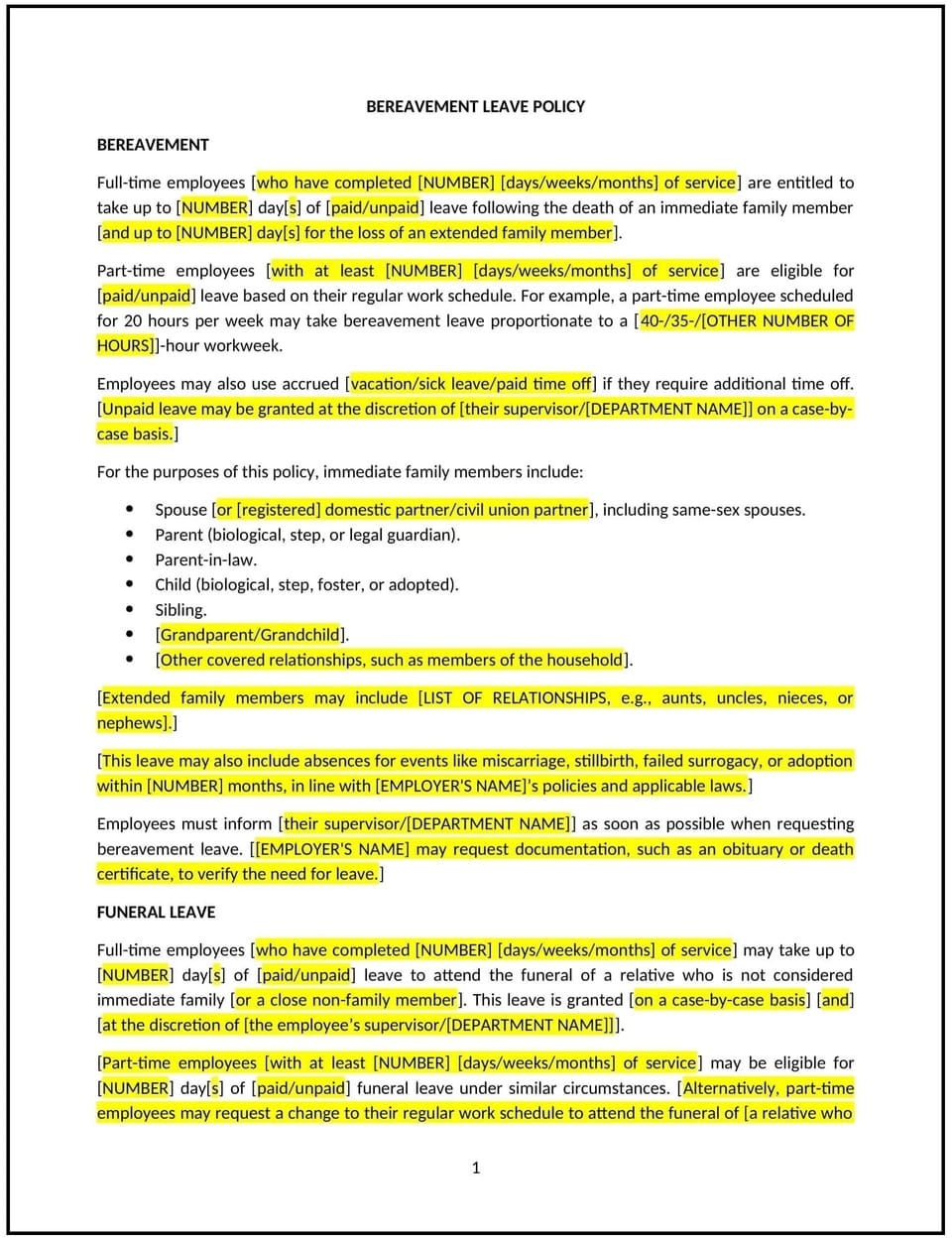Bereavement leave policy (South Dakota): Free template

Bereavement leave policy (South Dakota)
This bereavement leave policy is designed to help South Dakota businesses support employees during the loss of a loved one. It outlines procedures for requesting leave, duration of leave, and job protection during bereavement.
By adopting this policy, businesses can demonstrate empathy, support employee well-being, and align with general best practices for leave management.
How to use this bereavement leave policy (South Dakota)
- Define eligibility: Specify which employees are eligible for bereavement leave, such as full-time or part-time employees.
- Establish leave duration: Outline the maximum amount of leave allowed and whether it is paid or unpaid.
- Set request procedures: Provide steps for employees to request bereavement leave, including required documentation and notice.
- Ensure job protection: Guarantee that employees will return to the same or an equivalent position after leave.
- Train managers: Educate supervisors on handling bereavement leave requests and maintaining workflow during employee absences.
- Review and update: Assess the policy annually to ensure it aligns with evolving business needs and employee expectations.
Benefits of using this bereavement leave policy (South Dakota)
This policy offers several advantages for South Dakota businesses:
- Supports employee well-being: Demonstrates a commitment to helping employees during difficult times.
- Builds trust: Shows employees that the business values their personal circumstances and contributions.
- Enhances retention: Encourages employee loyalty by providing support during challenging situations.
- Promotes productivity: Reduces stress for employees, allowing them to focus on their work when they return.
- Aligns with best practices: Offers a structured approach to managing bereavement leave.
Tips for using this bereavement leave policy (South Dakota)
- Communicate the policy: Share the policy with employees and include it in the employee handbook.
- Provide training: Educate managers on handling bereavement leave requests and maintaining workflow during employee absences.
- Monitor compliance: Regularly review leave requests to ensure adherence to the policy.
- Address issues promptly: Take corrective action if leave requests are mishandled or denied improperly.
- Update regularly: Assess the policy annually to ensure it aligns with evolving business needs and employee expectations.
Q: How does this policy benefit businesses?
A: By offering bereavement leave, businesses can support employee well-being, build trust, and enhance retention.
Q: How long is bereavement leave typically provided?
A: Bereavement leave is often provided for 3-5 days, but this can vary depending on the business’s policy.
Q: Is bereavement leave paid or unpaid?
A: This depends on the business’s policy. Some businesses offer paid leave, while others may provide unpaid leave.
Q: Can bereavement leave be extended in special circumstances?
A: Businesses may allow extended leave in special circumstances, but this should be clearly outlined in the policy.
Q: How often should businesses review this policy?
A: Businesses should review the policy annually or as needed to ensure it aligns with evolving business needs and employee expectations.
This article contains general legal information and does not contain legal advice. Cobrief is not a law firm or a substitute for an attorney or law firm. The law is complex and changes often. For legal advice, please ask a lawyer.


